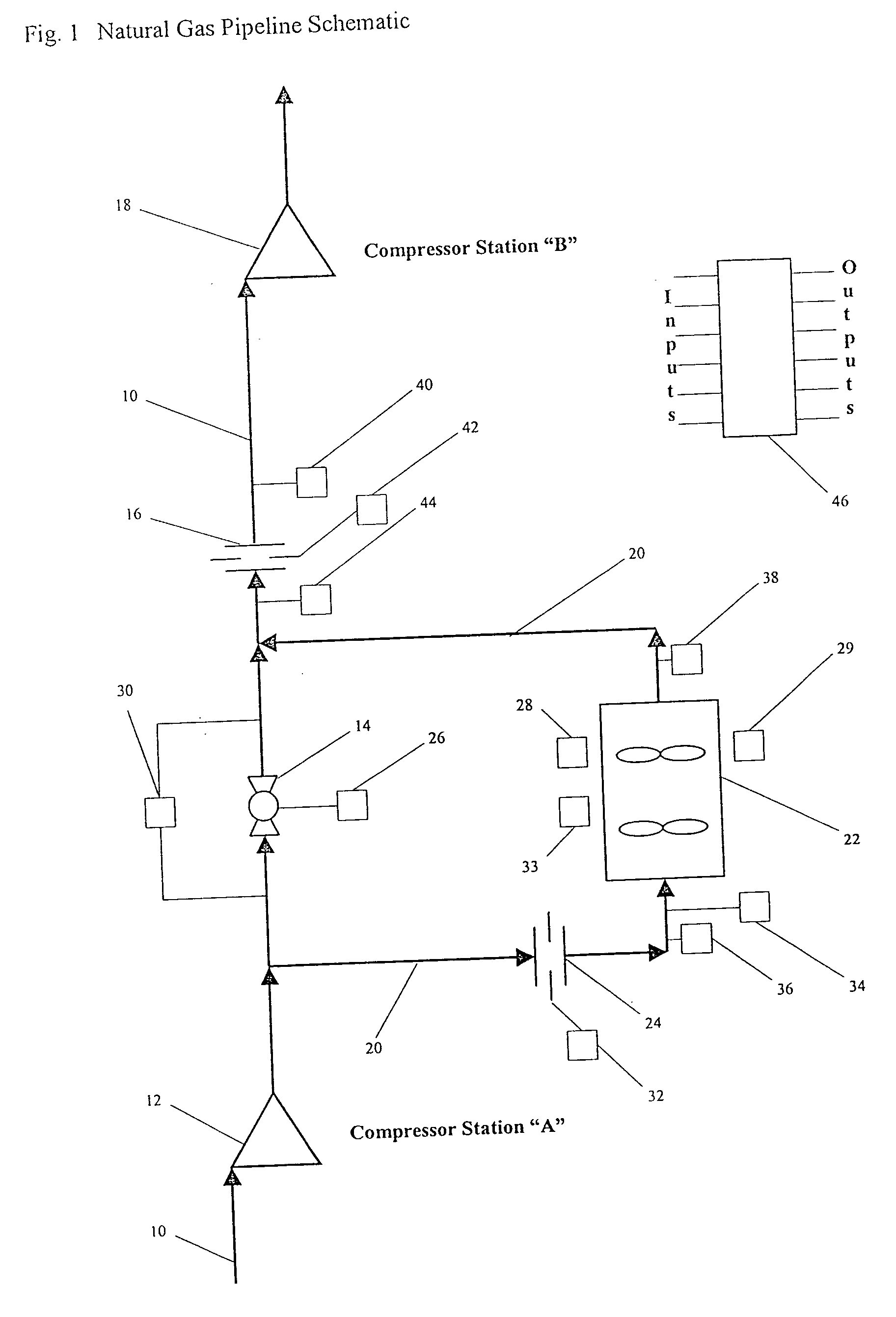Heat exchanger optimization process and apparatus
a technology of heat exchanger and heat exchanger, which is applied in the direction of heating apparatus, application, gas/liquid distribution and storage, etc., can solve the problems of greater pressure loss of natural gas, achieve maximum net power (and thereby energy) savings, reduce the amount of energy, and increase the transmission efficiency of the gas pipeline system
- Summary
- Abstract
- Description
- Claims
- Application Information
AI Technical Summary
Benefits of technology
Problems solved by technology
Method used
Image
Examples
Embodiment Construction
In this patent document, the word comprising is used in its inclusive sense and does not exclude other elements being present. The indefinite article “a” before an element does not exclude other elements being present.
The energy required to transport natural gas through a pipeline is stored in the form of gas pressure. Therefore as natural gas is transported along a pipeline it undergoes a pressure loss. The relationship of gas mass flow rate, pipeline inlet gas pressure and temperature to pipeline pressure loss can be defined as follows (based on the AGA Equation for pipeline pressure loss given fully turbulent pipeline flow); Δ Pgaspipe=Pgasinlet-(Pgasinlet2-[(mgaspipe)2*(Tgasinlet+Tgasoutlet)*(zgasinlet+zgasoutlet)(2.0615*[TgasstdPgasstd]*[SGgasLpipe]0.5*[log3.7ɛ / dpipe]*dpipe2.5)2])0.5
Given that standard pressure and temperature conditions, and pipeline length, relative roughness and diameter and natural gas specific gravity are constants then the impact of changing gas m...
PUM
 Login to View More
Login to View More Abstract
Description
Claims
Application Information
 Login to View More
Login to View More - R&D
- Intellectual Property
- Life Sciences
- Materials
- Tech Scout
- Unparalleled Data Quality
- Higher Quality Content
- 60% Fewer Hallucinations
Browse by: Latest US Patents, China's latest patents, Technical Efficacy Thesaurus, Application Domain, Technology Topic, Popular Technical Reports.
© 2025 PatSnap. All rights reserved.Legal|Privacy policy|Modern Slavery Act Transparency Statement|Sitemap|About US| Contact US: help@patsnap.com



